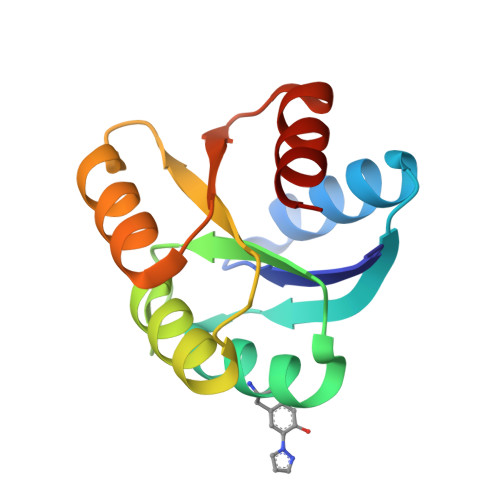Site-Specific Incorporation of a Cu2+Spin Label into Proteins for Measuring Distances by Pulsed Dipolar Electron Spin Resonance Spectroscopy.
Merz, G.E., Borbat, P.P., Muok, A.R., Srivastava, M., Bunck, D.N., Freed, J.H., Crane, B.R.(2018) J Phys Chem B 122: 9443-9451
- PubMed: 30222354
- DOI: https://doi.org/10.1021/acs.jpcb.8b05619
- Primary Citation of Related Structures:
6C40 - PubMed Abstract:
Pulsed dipolar electron spin resonance spectroscopy (PDS) is a powerful tool for measuring distances in solution-state macromolecules. Paramagnetic metal ions, such as Cu 2+ , are used as spin probes because they can report on metalloprotein features and can be spectroscopically distinguished from traditional nitroxide (NO)-based labels. Here, we demonstrate site-specific incorporation of Cu 2+ into non-metalloproteins through the use of a genetically encodable non-natural amino acid, 3-pyrazolyltyrosine (PyTyr). We first incorporate PyTyr in cyan fluorescent protein to measure Cu 2+ -to-NO distances and examine the effects of solvent conditions on Cu 2+ binding and protein aggregation. We then apply the method to characterize the complex formed by the histidine kinase CheA and its target response regulator CheY. The X-ray structure of CheY-PyTyr confirms Cu labeling at PyTyr but also reveals a secondary Cu site. Cu 2+ -to-NO and Cu 2+ -to-Cu 2+ PDS measurements of CheY-PyTyr with nitroxide-labeled CheA provide new insights into the conformational landscape of the phosphotransfer complex and have implications for kinase regulation.
- Department of Chemistry and Chemical Biology , Cornell University , Ithaca , New York 14853 , United States.
Organizational Affiliation:


















